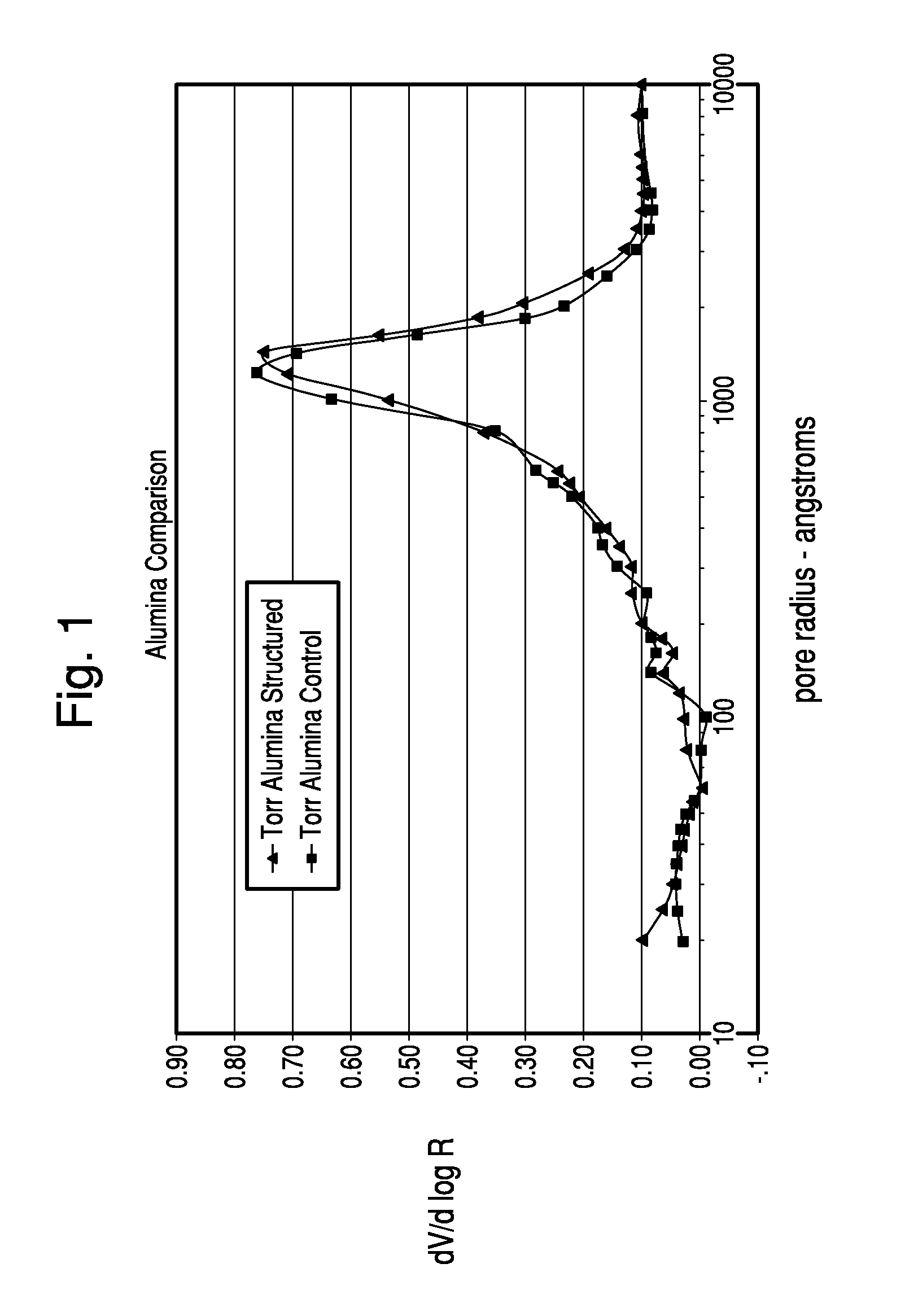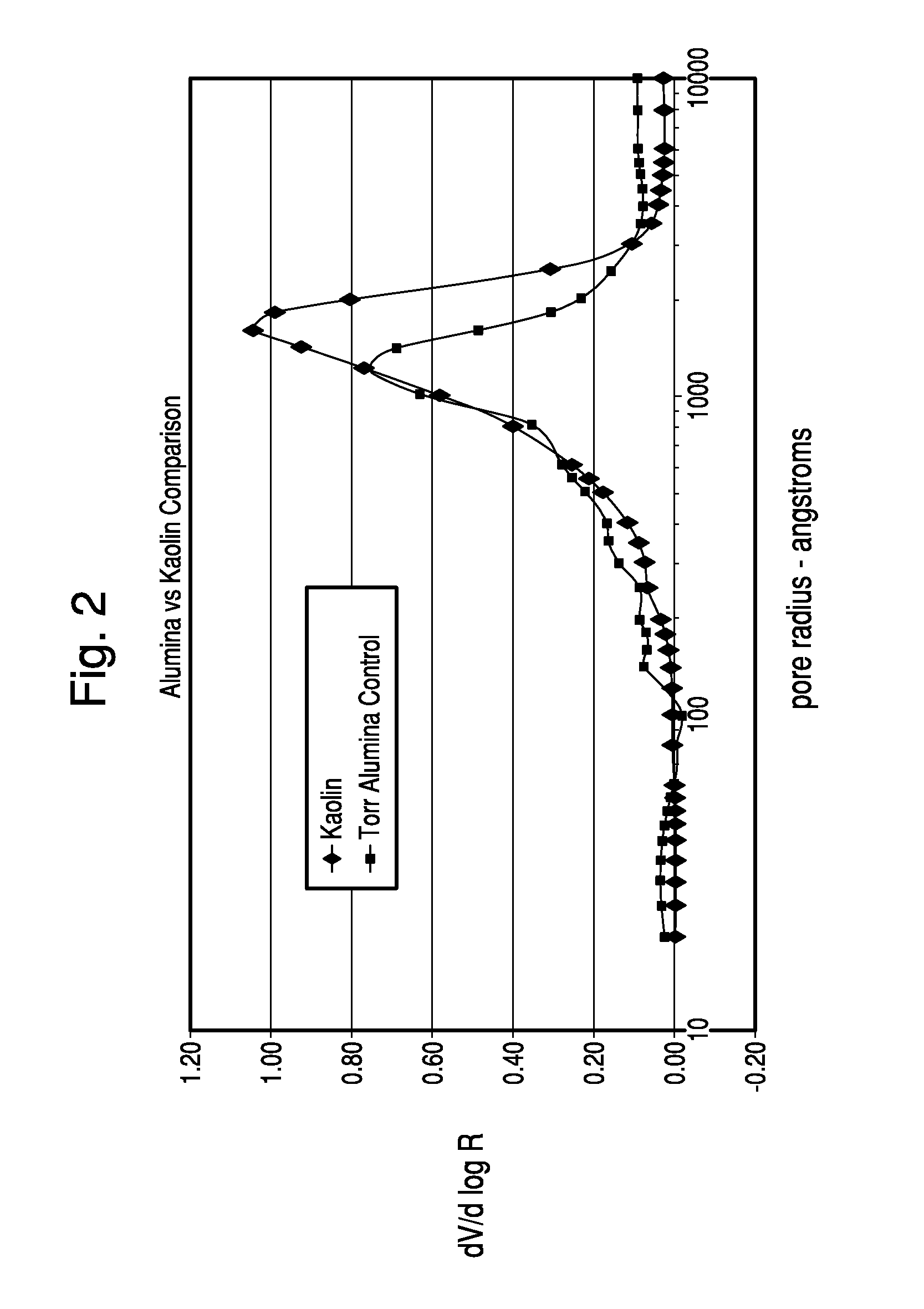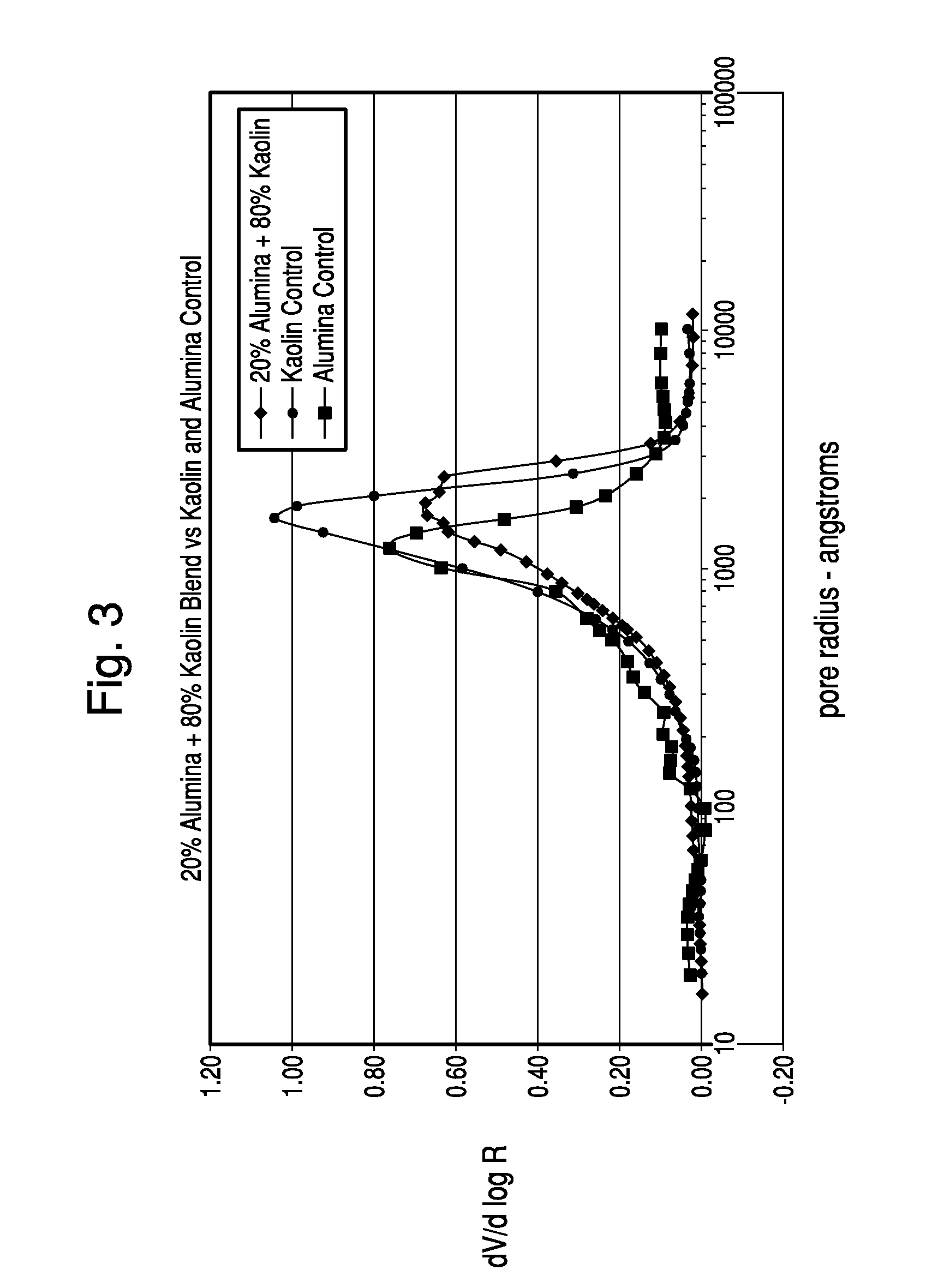Beneficial Thermo-Chemical Treatment of Kaolin with Ammonium Polyphosphate
- Summary
- Abstract
- Description
- Claims
- Application Information
AI Technical Summary
Benefits of technology
Problems solved by technology
Method used
Image
Examples
example 1
[0029]In this example, the feed for a commercial calcined paint kaolin pigment is used to demonstrate how the addition of ammonium polyphosphate liquid (11-37-0) to the anionically dispersed spray dryer feed slurry can stabilize the mineral lattice and enhance calcined product brightness potential. The mineral in this example exhibits a particle size distribution of 86 to 90% less than 1.0 micron (as measured by Sedigraph 5100 / 5120 particle size analyzer) and a BET surface area of 20.0 to 22.0 m2 / gm (Gemini 2370 surface area analyzer). 11-37-0 ammonium polyphosphate liquid was added at a rate of 0.50 weight percent P2O5 per dry ton of kaolin. The kaolin slurry concentration was in the 45 to 65% solids range.
[0030]The slurry was spray dried by a process equipped with a centrifugal atomizer. This method was selected for convenience. i.e. other drying methods would be equally effective with a goal to reduce product moisture to below 2.0 percent by weight (CEM Labwave 9000 moisture anal...
example 2
[0032]The kaolin used in this example exhibited a particle size distribution of 86 to 90% less than 2.0 microns (as measured by Sedigraph 5120 particle size analyzer) and a BET surface area of 18.8 m2 / gm (Gemini 2370 surface area analyzer). 11-37-0 ammonium polyphosphate liquid was added in increasing increments of from 0.15 to 0.35 weight percent P2O5 per dry ton of kaolin. The kaolin slurry concentration to spray drying was in the 45 to 65% solids range. Apparent bulk density (ABD) is the weight per unit volume of a material, including voids that exist in the tested material. It can also be called Bulk Density and provides a measure of the “fluffiness” of a material in its supplied form. Tamped bulk density (TBD) measures the propensity of a pigment to gradually pack more efficiently. This tendency was measured with a TAP-PACK Volumeter (ISO 787-11)
[0033]The structuring advantages brought about by the addition of polyphosphate to calcined kaolin feeds can also seen in mitigating c...
example 3
[0034]In Table 4, the calciner feed for a commercial paper pigment was treated with 3.22 modulus sodium silicate at a level of 1.2% SiO2 per dry ton of kaolin. This feed was characterized as having a particle size distribution of 91.0% less than 1.0 micron (Sedigraph 5120 particle size analyzer) and a BET surface area of 21.1 m2 / gm (Gemini 2370 surface area analyzer. The sodium silicate liquid was added to the spray dryer feed slurry. The calciner feed was spray dried to less than 2.0% moisture by weight (CEM Labwave 9000) and pulverized before lab calcination. Calcination residence time was 1.0 hour. Degree of calcination was determined by relative mullite index (M.I.) and the calcined product was pulverized to simulate the deagglomeration process used in commercial paper pigment production.
TABLE 4Sodium Silicate Flux (1.2% SiO2)+325OilProductGEBMeshSurfaceAbsorp-PSDPSDMIBrightnessResidueAreation@ 2@ 1APS20.890.60.74029.9252.952.435.75.3228.990.40.93598.4253.149.431.35.5835.690.41....
PUM
| Property | Measurement | Unit |
|---|---|---|
| Temperature | aaaaa | aaaaa |
| Fraction | aaaaa | aaaaa |
| Fraction | aaaaa | aaaaa |
Abstract
Description
Claims
Application Information
 Login to View More
Login to View More - R&D
- Intellectual Property
- Life Sciences
- Materials
- Tech Scout
- Unparalleled Data Quality
- Higher Quality Content
- 60% Fewer Hallucinations
Browse by: Latest US Patents, China's latest patents, Technical Efficacy Thesaurus, Application Domain, Technology Topic, Popular Technical Reports.
© 2025 PatSnap. All rights reserved.Legal|Privacy policy|Modern Slavery Act Transparency Statement|Sitemap|About US| Contact US: help@patsnap.com



